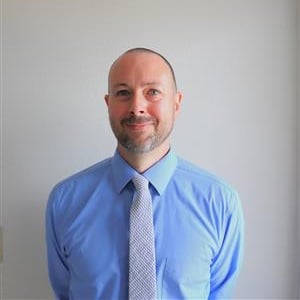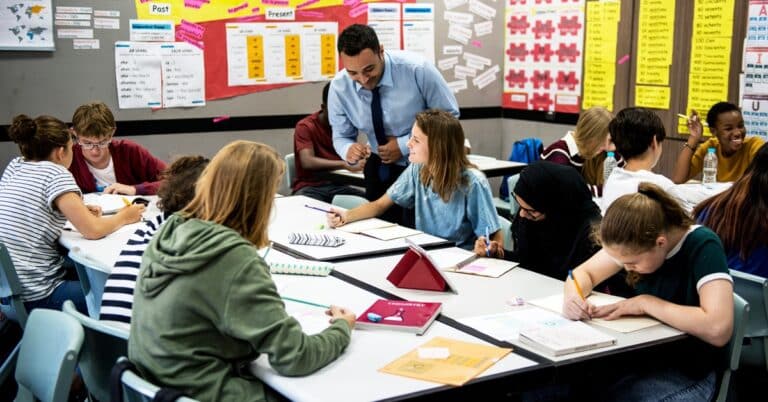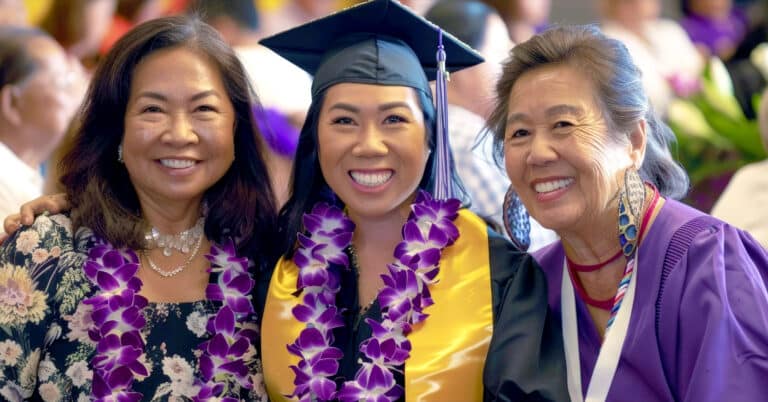By Ian McDougall
Shifting the grading practice of an entire campus can seem like a daunting endeavor, but at San Luis High School in San Luis, Arizona, we are succeeding step-by-step in the transition to standards-based grading.
The campus began this shift to more accurately gauge student learning and create student outcomes that aligned with our focus on learning progression and growth. There have been bumps in the road, but we are currently in year three of our transition with the end goal of being a 100 percent standards-based grading campus at the start of year four. Our campus has over 100 teachers working with over 2,500 students in conjunction with sister schools in the Yuma Union High School District #70 in the Yuma, Arizona area.
The Yuma Union High School District’s mission of “Every student college, career and community prepared” has allowed its schools to build out programs such as standards-based grading that support the personalized nature of meeting each student where they are. This transition to standards-based grading, focusing on students achieving proficiency across a broad range of learning standards, was driven by discussions and committees of educators and administrators who saw a need for the transformation. It was a vision of a better way of educating the students of the district. In the end, the process was a bottom-up build with top-down support.
The start of a fundamental shift
Our standards-based grading journey began in an auditorium with a presenter that forced teachers and administrators at every level to rethink grading policy. That February day, Rick Wormeli, author of Fair Isn’t Always Equal, sold many of us on the idea of standards-based grading. Many teachers in the room loved the idea but had little hope that the district would actually adopt it. To change the district’s grading practice would require a fundamental shift in thinking about student work, grading and assessment at every level of the institution. And often large institutions change at a glacial pace. While many in the room doubted it would ever become a reality on our campus or in our district, conversations behind the scenes had already begun. Standards-based grading was possible, and it would soon tiptoe into a few of our district’s campuses.
In April, campus administrators decided to start with teachers who were open-minded, flexible and experienced. The teachers invited to participate in the optional pilot group all taught different content areas so that the experimentation was spread across the campus as much as possible. They approached five teachers, seen as an innovative teacher-leader on campus, about the feasibility of implementing standards-based grading the following school year. All of the teachers would be implementing it in classes that were only taught by that teacher so there wouldn’t be any benefit or detriment to students across a subject area. These single classes allowed the teachers the flexibility to try this new grading system out in a small sub-group of teachers and students.
The chosen teachers were provided with time in April and May to meet, plan and support each other to develop standards and scales specifically for their courses. The teachers were also supported by administration through attending a two-day professional development session on implementing standards-based grading. The district office and technical support were crucial at this phase by helping the teachers set up standards-based gradebooks. Finally, the “why” was identified. The school wanted to measure student learning and knowledge in a meaningful and accurate way that removed the formative and daily tasks from the gradebook.
Rolling out the plan with communication and continuous learning
When students and teachers returned in August, the rollout began in earnest for year one. The first task for the teachers implementing standards-based grading was to communicate it to students. These conversations began with the “why” and a sales pitch to convince the students to buy into this change. The new grading model was covered in each of the courses’ syllabi, and emails were sent home to families or guardians explaining what standards-based grading is and why it was being implemented. With the help of a fellow school in the Phoenix area that was already using standards-based grading, we created an 11-page manual that overviewed the components of standards-based grading on our campus, used anytime a parent or other stakeholder had questions.
The essentials of a standards-based grading manual
The San Luis High School standards-based manual contains:
- Overview of standards-based grading
- Campus guiding principles for standards-based grading
- Assessment and reassessment policies
- Role of practice and formative work
- Role of zero in the gradebook
- Levels of performance in a standards-based gradebook
- Communication overview
- Last score policy for standards-based grading
- Key vocabulary around standards-based grading
The campus standards-based grading manual is publicly available on the school’s website and can be viewed online here.
Over the course of the first semester the pilot group of five met regularly with administrators included in the conversations to support each other and get feedback. One of the things learned early on was that the teachers were often overambitious and laid out far more standards than could ever be effectively assessed in the given time. This process helped the pilot group refine what was essential and accurate. To do that, they:
● Identified and rewrote weak standards
● Eliminated unused and duplicate standards
● Updated scales with more detailed, student-friendly language to provide more clarity when grading and giving student feedback
● Practiced grading assessments using the scales
The end of the first semester saw the pilot group and their students finally grasp the “why” as a tangible, attainable concept.
Expanding implementation
In January of year one, the administration decided that the following school year standards-based grading would expand to include all freshman core classes (World History, Math, English and Biology). However, the administration would open the possibility of standards-based grading to any elective teacher and any other full professional learning community (PLC) that wanted to. Knowing that year two would bring the campus up to 20 percent or more of the courses as standards-based, the need for professional development became paramount.
In February, all teachers and counselors on campus were given a six-hour day of training. It began with the “why,” explained how to write standards or adapt state standards, how to make scales and how to assess using standards-based grading. Teachers across the campus worked in groups to begin selecting and creating standards and developing scales. At the end of the day, everyone left with at least one standard and scale ready to use. Over the remainder of the school year, freshman PLCs that would be implementing standards-based grading in year two were given time and support to finish completing the standards and scales for the courses.
Even though only the select freshmen teachers were officially going to be doing standards-based grading, everyone was trained and given the opportunity. Another key component of this training was that all of the campus counselors were included. As they have the most contact with parents and guardians, having them understand standards-based grading was critical for building the idea throughout the community with all stakeholders. At the end of February, all non-freshmen core teachers and PLCs were asked if they were going to switch to standards-based grading. The goal was to have a bit over 20 percent of staff, but teachers across the campus bought into the “why” and the campus moved forward with over 30 percent of staff implementing standards-based grading in year two of the process.
During year two, as many teachers implemented standards-based grading, plans were already underway for year three to bring on board all sophomore and junior core classes, most Career and Technical Education (CTE) courses and numerous other elective courses such as the modern language, fine arts and physical education departments. In February of year two, the school offered additional training on standards-based grading and offered teachers time to further develop and revise standards and scales for the following year. At the end of year two, the school more than doubled the standards-based grading courses offered.
This year, year three of the process of campus-wide implementation of standards-based grading, more than 70 percent of offered courses use standards to grade. Teachers, both experienced and new to standards-based grading, are offered opportunities to refine their standards and scales to improve student outcomes. As the midway point of year three passes, the plan is now in its final stages. In year four, nearly 100 percent of classes offered on the San Luis High School campus will be standards-based.
Educator dispositions and continued growth
The process was slow and relatively simple, but at times far from smooth. The greatest challenge to the implementation of standards-based grading on the campus was often the teachers, not the students, administration or other stakeholders. While a few teachers found the change frustrating, most teachers were resistant because it was new and they didn’t fully understand the change.
Happily, most of those teachers bought in fully as their understanding of standards-based grading improved and they became more comfortable with it. The support and flexibility of students, teachers, counselors, staff, administrators and stakeholders has been critical to the success and growth. The job is still not done though. Teachers still need continued training and support, and standards and scales continue to be updated and refined.
San Luis High School is successfully making this powerful transition to standards-based grading because it is best for students. There is always more work to do, but having a staff and administration with a growth mindset has helped the process greatly. It may not have taken a village and glacial pace to make this change, but it definitely required the support and willingness of the school community.

Ian McDougall
History Teacher and Edtech Coach
Yuma Union High School District, Yuma, Arizona




